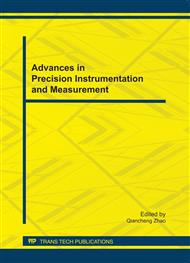[1]
Sun Hui. Present Condition and Develop -ment of Aluminum Hot Continuous Rolling line in China[J]. Jiangxi Non- ferrous Metals, 2006, 20(4): 24-25, 28.
Google Scholar
[2]
Iron and Steel Institute of Japan. Plate Strip Rolling Theory and Practice[M]. Wang Guodong, Wu Guoliang (translate). Beijing: Chinese Railway Press, (1990).
Google Scholar
[3]
Zhao Zhiye. Metal Plastic Deforma- tion and Rolling Theory[M]. Beijing: Metallurgical Industry Press, (2005).
Google Scholar
[4]
Liu Xianghua. The Application of Rigid Plastic FEM in Rolling [M]. Beijing: the Publishing Company of Metallurgy and Industry, (1994).
Google Scholar
[5]
Guo Jinlong, Kang Yuhua, Liu Yilun, He Yuhui. Numerical Simulation of Temperature Field during the Hot Rough Rolling on Aluminum Block [J]. Journal of Hunan University of Science and Technology (Natural Science Edition), 2007, 22(2): 31-34.
DOI: 10.1109/mace.2010.5535536
Google Scholar
[6]
Song J L, Dowson A L, Jacobs M H. Coupled Termo-mechanical Fnite- element Modeling of Hot Ring Rolling Process[J]. Journal of Materials Processing Technology, 2002, 21: 332-340.
DOI: 10.1016/s0924-0136(01)01179-7
Google Scholar
[7]
Chen Huohong. Marc Finite Element Example Analysis Tutorial[M]. Beijing: Mechanic Industry Press, (2002).
Google Scholar
[8]
Lan Yongjun, Chen Xiangyong, Huang Chengjiang, Li Dianzhong Li yiyi. Numerical Simulation and Experimental Verification of Temper -ature Ditribution in Hot-Rolling Strip Steel[J]. Acta Metallurgica Sinica, 2001, 37(1): 99-103.
Google Scholar
[9]
Tao Wenquan. Numerical Heat Transfer[M]. Xi'an: Xi 'an jiaotong university press, (1988).
Google Scholar
[10]
Dai Guosheng. Theory for Heat- transfer (II) [M]. Beijing: Higher Education Press, (1999).
Google Scholar
[11]
M. Pietrzyk, J.G. Lenard. Study of Heat Transfer During Flat Rolling [J]. International Journal for Numerical Methods in Engineering, 1990, 30(8): 1459-1469.
DOI: 10.1002/nme.1620300809
Google Scholar
[12]
Zhang Peng, Lu Shouli, Gao Yong- sheng. Prediction of Temperature Distribution during the Hot Rolling of Strip by FEM(Ⅱ) [J]. Journal of University of Science and Techno- logy Beijing, 1998, 20(1): 99-102.
Google Scholar
[13]
He Yuhui, Liu Yilun, Deng Gao- chao, Kang Yuhua, Chen Dailun. Numerical Simulation of Influence of Process Parameters on Alumi -num Plate's Temperature Drop during Hot Rolling[J]. Journal of Central South University (Natural Science Edition), 2007, 38(4): 728- 733.
Google Scholar
[14]
A. Chandra. Simulation of Rolling Processes by the Boundary Element Mothod[J]. Advanced Boundary Element Mothod, Edited by Cruse, T.A., spring- Verlg, 1987: 93-100.
DOI: 10.1007/978-3-642-83003-7_10
Google Scholar


